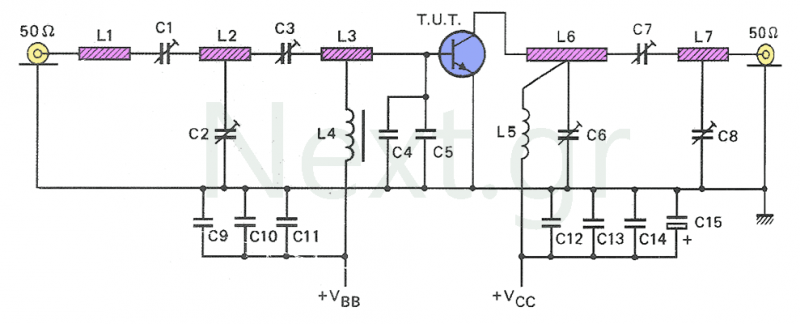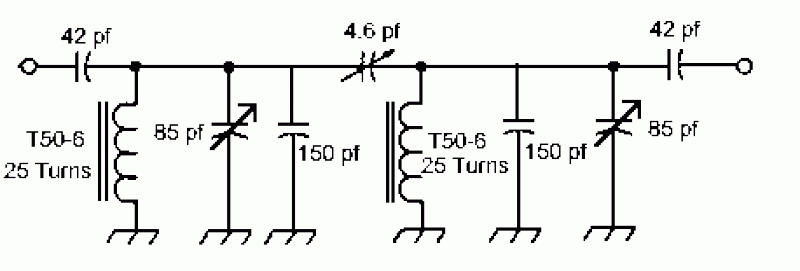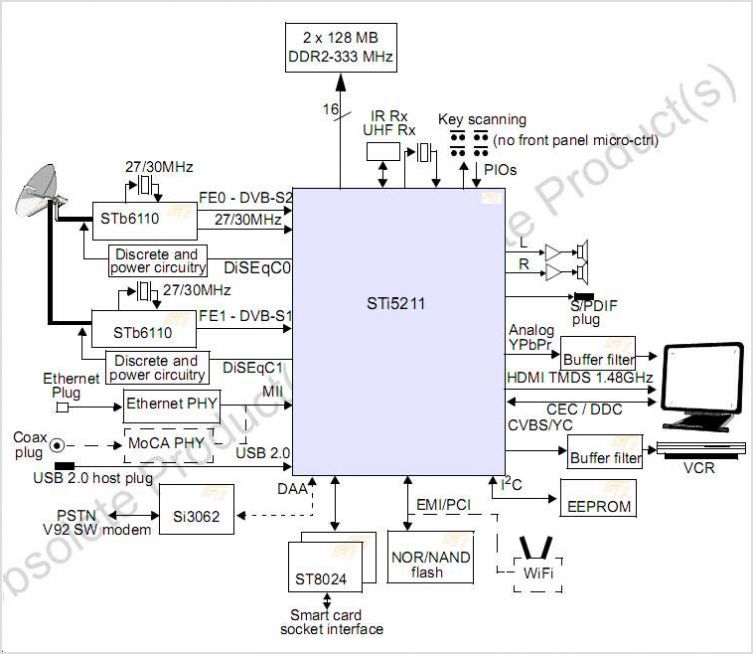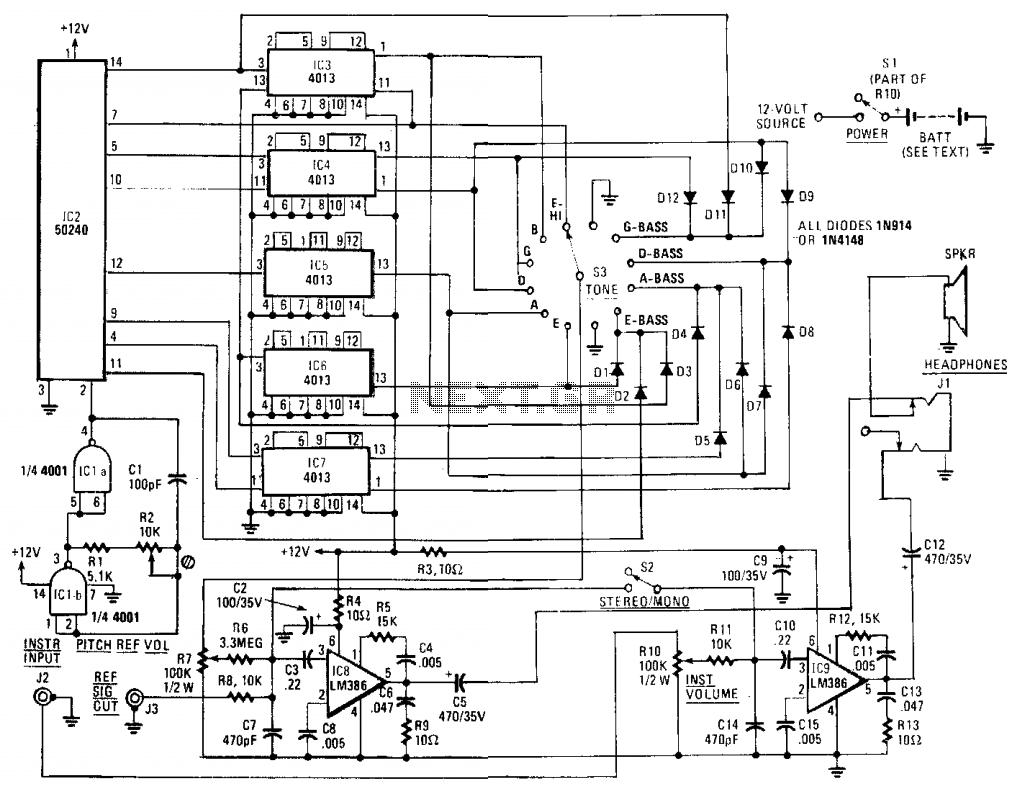
High-Pass Filter controls UHF Ingress to Satellite DBS Tuner
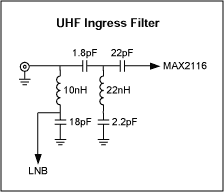
This application note discusses the design of a UHF ingress filter intended for a Satellite DBS tuner. The filter is designed to achieve 20 dB of stopband attenuation within the frequency range of 54-650 MHz, while maintaining an in-band insertion loss of 0.7 dB.
The UHF ingress filter is a crucial component in satellite communication systems, specifically for Direct Broadcast Satellite (DBS) tuners. Its primary function is to eliminate unwanted signals and noise from the UHF band, ensuring that the desired satellite signals are received with minimal interference. The filter operates effectively within the specified frequency range of 54-650 MHz, which encompasses various potential sources of ingress noise.
The design of the filter typically involves a combination of passive components such as inductors and capacitors, arranged to create a low-pass or band-stop filter configuration. The choice of components and their respective values is critical to achieving the desired attenuation characteristics. In this case, the filter is engineered to provide 20 dB of attenuation in the stopband, significantly reducing the impact of out-of-band signals on the performance of the DBS tuner.
In-band insertion loss is another important parameter that influences the overall performance of the filter. With a measured insertion loss of 0.7 dB within the passband, the filter allows the desired satellite signals to pass through with minimal signal degradation. This low insertion loss is essential for maintaining signal integrity and ensuring high-quality reception of satellite broadcasts.
To validate the filter's performance, simulation tools may be employed to model the frequency response and to optimize the component values. Additionally, practical testing should be conducted to measure the actual insertion loss and stopband attenuation, verifying that the filter meets the design specifications.
Overall, the UHF ingress filter is a vital element in the design of Satellite DBS tuners, contributing to the reliability and quality of satellite communication by effectively mitigating unwanted interference in the specified frequency range.This application note covers the design of a UHF ingress filter for a Satellite DBS tuner. The filter provides 20dB of stopband attenuation from 54-650MHz with 0.7dB in-band insertion loss.. 🔗 External reference
The UHF ingress filter is a crucial component in satellite communication systems, specifically for Direct Broadcast Satellite (DBS) tuners. Its primary function is to eliminate unwanted signals and noise from the UHF band, ensuring that the desired satellite signals are received with minimal interference. The filter operates effectively within the specified frequency range of 54-650 MHz, which encompasses various potential sources of ingress noise.
The design of the filter typically involves a combination of passive components such as inductors and capacitors, arranged to create a low-pass or band-stop filter configuration. The choice of components and their respective values is critical to achieving the desired attenuation characteristics. In this case, the filter is engineered to provide 20 dB of attenuation in the stopband, significantly reducing the impact of out-of-band signals on the performance of the DBS tuner.
In-band insertion loss is another important parameter that influences the overall performance of the filter. With a measured insertion loss of 0.7 dB within the passband, the filter allows the desired satellite signals to pass through with minimal signal degradation. This low insertion loss is essential for maintaining signal integrity and ensuring high-quality reception of satellite broadcasts.
To validate the filter's performance, simulation tools may be employed to model the frequency response and to optimize the component values. Additionally, practical testing should be conducted to measure the actual insertion loss and stopband attenuation, verifying that the filter meets the design specifications.
Overall, the UHF ingress filter is a vital element in the design of Satellite DBS tuners, contributing to the reliability and quality of satellite communication by effectively mitigating unwanted interference in the specified frequency range.This application note covers the design of a UHF ingress filter for a Satellite DBS tuner. The filter provides 20dB of stopband attenuation from 54-650MHz with 0.7dB in-band insertion loss.. 🔗 External reference
